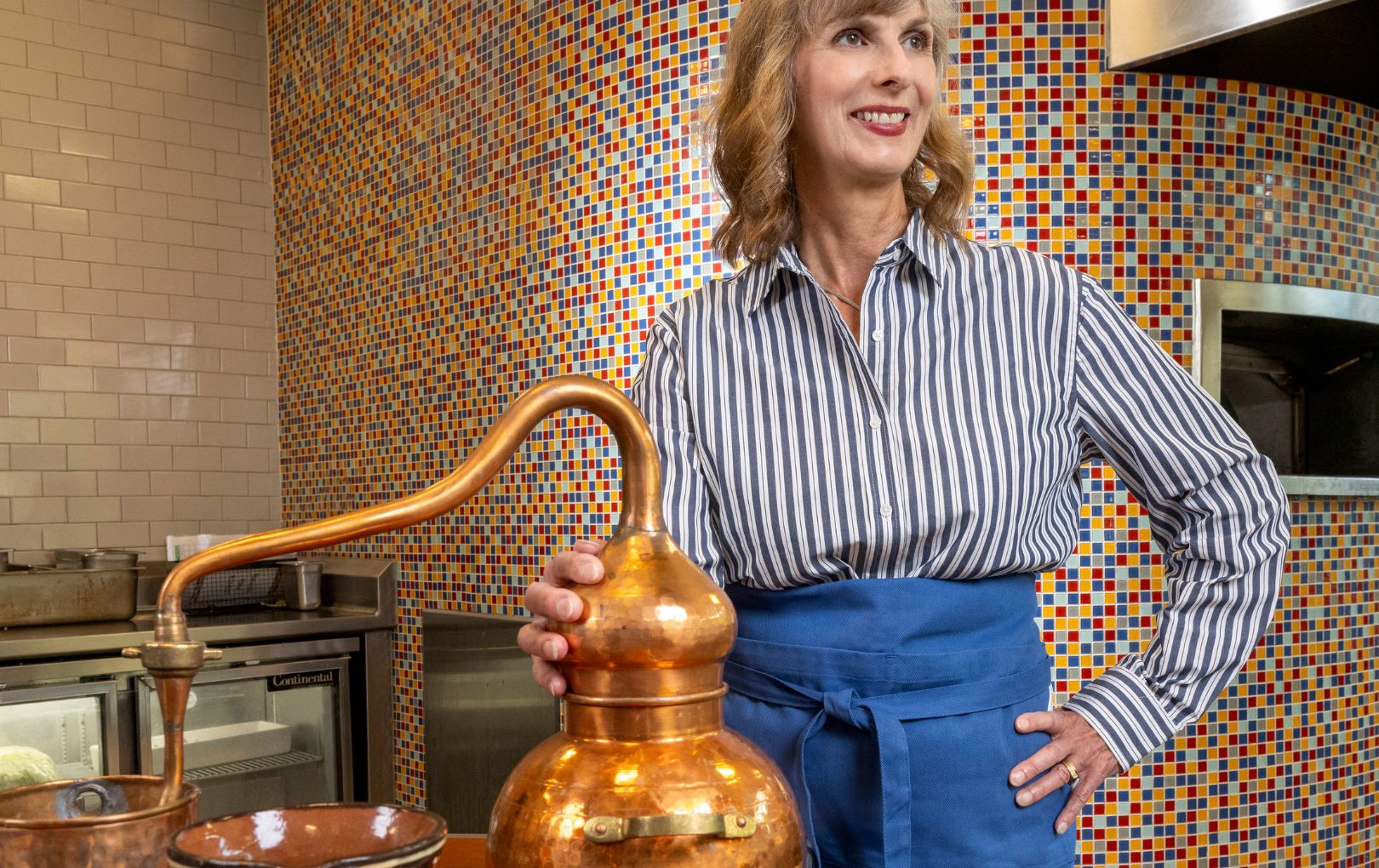Bitter, sweet and steeped in history
Thursday, Oct 23, 2025 • Cristal Gonzalez : Contact

On Halloween night, children across the country will return home with bags full of Reese's, Kit-Kats, Twix, Snickers and other chocolate favorites. While the chocolate bar as we know it emerged in the 19th century, chocolate’s roots trace back to pre-Columbian Meso-America. In honor of National Chocolate Day on Oct. 28, Amy Tigner, professor of English at The University of Texas at Arlington and lover of chocolate, explores chocolate's rich history, its evolution from drink to confection and the meticulous art of making it by hand.
For a few of her courses, Dr. Tigner has led her students in making a 1674 recipe for a chocolate paste that can be used in a hot drink. The recipe, written by Penelope Jepsen, calls for cacao beans, cinnamon, sugar, grated nutmeg, ground aniseed, long pepper, Jamaican pepper, achiote and ambergris, which she omits because it is a secretion from the bile duct of sperm whales. Roasting the cacao beans and grinding the spices are some of the most time-consuming parts of making chocolate drinks by hand.
"Students are often surprised by the taste,” Tigner said. “Many don't like it because it's not sweet, and it isn't rich because it's made with water rather than milk. Some coffee lovers who like to drink their coffee black like it because the two drinks have commonalities— they’re bitter, hot and caffeinated."
Her research shows that chocolate originated in Mexico as a cold, bitter drink with spices added. During the 17th century, the number of spices in chocolate recipes declined, while the amount of sugar increased. In England at the time, chocolate was typically warmed and mixed with milk, alcohol and sometimes eggs to create a medieval drink known as a posset.
Related: Alum pours passion into Casa Azul coffee
"Water sources were poor in England, so instead of drinking cold water, people of all ages drank small beer, which was a beer with low alcohol content that was safer to drink than the often-contaminated water," Tigner said. "Mixing chocolate with alcohol helped kill the harmful germs in the water, and warming it made it a cozy drink like eggnog."
During the 18th century, chocolate houses flourished in Europe, serving as social venues for intellectual and political discussions. The trend later spread to the U.S., with chocolate houses opening in cities such as Philadelphia, New York, Boston and other urban areas with enough patrons to support them. Eventually, chocolate houses were replaced by coffee houses, as other caffeinated drinks took center stage.
Once an expensive luxury enjoyed mainly as a drink, chocolate became more accessible during the Industrial Revolution, when a steel roller system made the mass production of chocolate possible. Joseph Fry created the first chocolate bar in 1847, and soon after, names like Lindt, Hershey’s, Cadbury and Nestlé made history with products beloved around the world.
“One of the reasons I like studying chocolate is that there’s a wealth of documentation on how it becomes part of different cultures,” Tigner said. “It is really interesting to follow how it changes through time and through taste. Chocolate offers a clear historical trajectory—and of course, we all love chocolate.”
- Ellie Schirm, Office of Marketing, Messaging, and Engagement
About The University of Texas at Arlington (UTA)
Celebrating its 130th anniversary in 2025, The University of Texas at Arlington is a growing public research university in the heart of the thriving Dallas-Fort Worth metroplex. With a student body of over 42,700, UTA is the second-largest institution in the University of Texas System, offering more than 180 undergraduate and graduate degree programs. Recognized as a Carnegie R-1 university, UTA stands among the nation’s top 5% of institutions for research activity. UTA and its 280,000 alumni generate an annual economic impact of $28.8 billion for the state. The University has received the Innovation and Economic Prosperity designation from the Association of Public and Land Grant Universities and has earned recognition for its focus on student access and success, considered key drivers to economic growth and social progress for North Texas and beyond.
Latest News
- Do more with less strain: UTA’s robotic armSoft, air-powered exoskeleton eases muscle fatigue, reduces injuries and boosts workplace safety
- UTA study: Just a little movement can lift your moodSwapping just 30 minutes of sitting for light activity boosts energy and mood the next day
- Training tomorrow’s archaeologists for critical careersUTA students gain hands-on experience in cultural resource management, a high-demand field safeguarding historic sites
- Bucket list wishes make final days meaningfulUTA study finds fulfilling end-of-life bucket list wishes boost well-being, family bonds, and closure
- UTA earns elite status for cybersecurity researchNSA designation affirms the University’s national leadership in cyber innovation, education and workforce growth
- From the front lines to the archives at UTALegendary journalist Bob Schieffer donates his Vietnam collection, capturing the lives and voices of Texas soldiers






